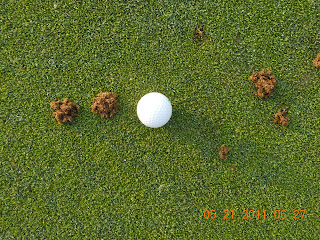Seed corn beetle being reported by superintendents
In addition
to earthworms, there are several insects that can create small mounds of soil
above the surface of turfgrass. Occasionally, the mounds can become a nuisance,
especially on closely mowed greens where they are more noticeable and may
interfere with play.
The photos below depict one such insect, the seed corn
beetle, and the kind of damage it can cause on putting greens. Superintendents
across northern Indiana are currently noticing a fair amount of this activity.
Despite their name, corn seeds are not the primary food source for seed
corn beetles. Rather, they feed on other things they find in the soil including
other insects. They are also highly attracted to lights at night. There are two
generations per year, typically occurring in May/June and again in August.
Although these
beetles are generally beneficial and do not represent a serious management concern,
their damage can sometimes be an annoyance. Management recommendations for
these beetles usually include applying
a surface insecticide (e.g. pyrethroid) as soon as mounds appear.
Superintendents who have in place preventive white grub/cutworm applications
using a higher rate of Acelepryn (16 floz/Acre) have reported success at
minimizing damage and witnessed dead beetles to serve as evidence.Figure 2. Damage to a golf course green caused by burrowing activity of adult seed corn beetle
Doug Richmond
Purdue
University Turfgrass Entomologists 






0 comments:
Post a Comment
Note: Only a member of this blog may post a comment.